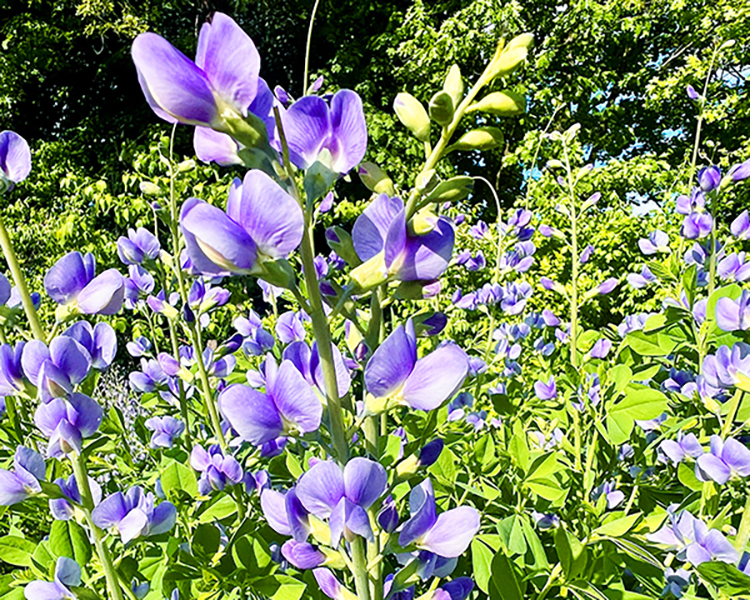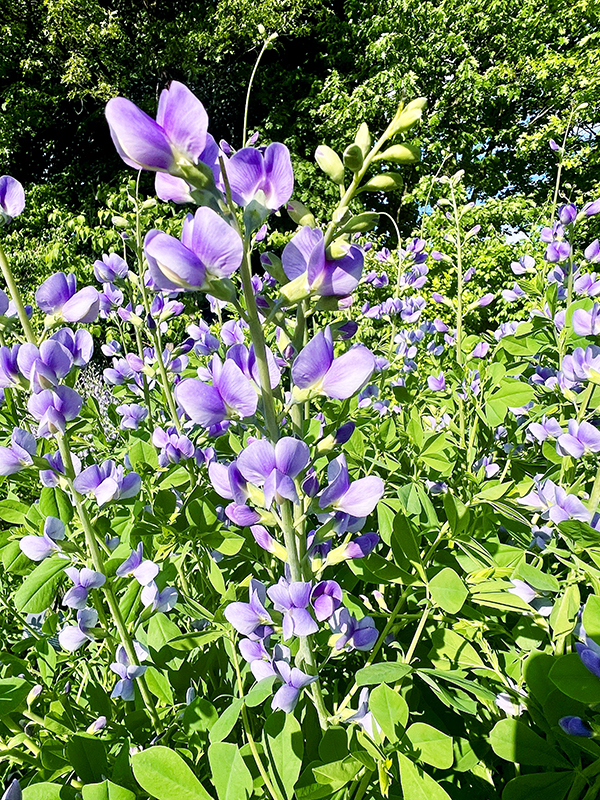
June 04, 2024| Education, Environment
By: Laurie Kane
With the spring rains and the recent burst of warm weather, our gardens are growing at an incredible pace. The new additions from our recent native plant sale are thriving, and we hope yours are too!
Wild indigo (Baptisia australis), also known as blue baptisia, is abundant in the foundation's gardens and is bursting with buds just starting to open. This tall, bushy perennial produces vibrant blue flowers on blue-green foliage and blooms from late spring to early summer. This long-lived and vigorous plant is drought tolerant, thrives in poor soil, and requires little maintenance. Native Americans used wild indigo for various medicinal purposes, including as an antiseptic and anti-inflammatory, and they made a blue dye from its flowers—a practice later adopted by European settlers. After blooming, the flowers are followed by inflated seed pods that turn black when ripe and are used in dried floral arrangements. Wild indigo will attract bees and butterflies to your garden.
 |
 |
| Wild Indigo | Bluebell of Scotland |
The small blue-violet bell-shaped flowers blooming in our specimen garden are known as harebell or bluebell of Scotland (Campanula rotundifolia). Native throughout the northern hemisphere, this plant is very popular in Scotland and is the official county flower of Yorkshire, England—harebell blooms in spurts from summer to fall. In Europe, the leaves are sometimes eaten raw in salad. Like wild indigo, harebell has been used to manufacture blue dye. Native bees and hummingbirds are attracted to the bell-shaped purple flowers.
Both wild indigo and harebell add vibrant color and ecological benefits to our gardens, attracting pollinators and offering low-maintenance beauty. We're excited to see what will bloom next in our native gardens. Feel free to stop by at 125 Landing Road, Landing, for a look!

September 12, 2025
Environment

September 12, 2025
Education, Environment

September 11, 2025
Community, Events, Fundraising, Recreation